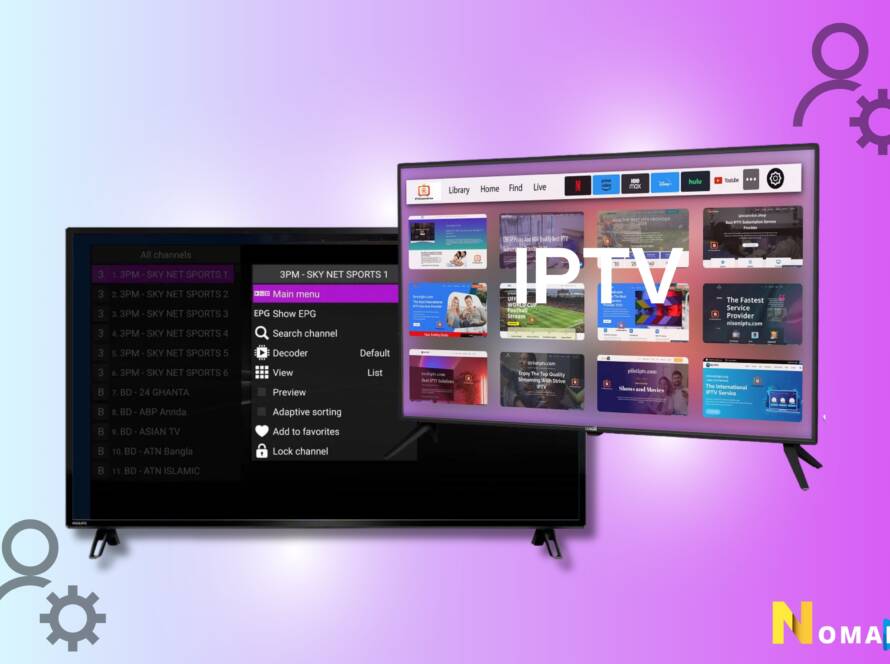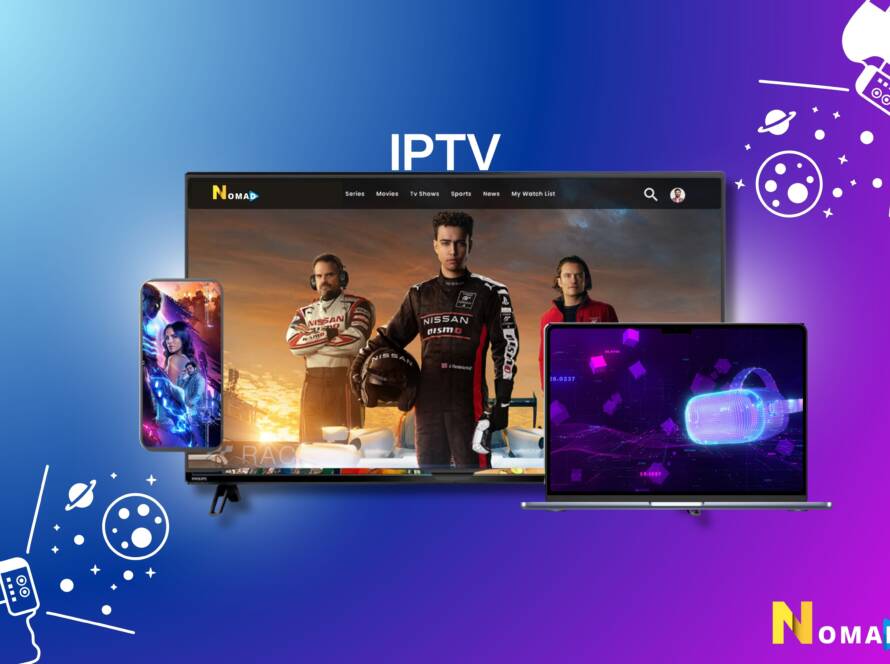OTT Platforms Over-the-top platforms are referred to as OTT platforms. These days, OTT platforms are widely used due to people’s varied tastes and interests. The days when people relied on television to air their favourite shows are long gone. These days, many have OTT platform subscriptions. After choosing their preferred genre, users can begin viewing the desired content. A lockdown and the COVID-19 pandemic have made people stay at home. With schools, workplaces, and theatres closed, people’s only source of amusement is over-the-top (OTT) platforms.
Table of Contents
What is an OTT platform?
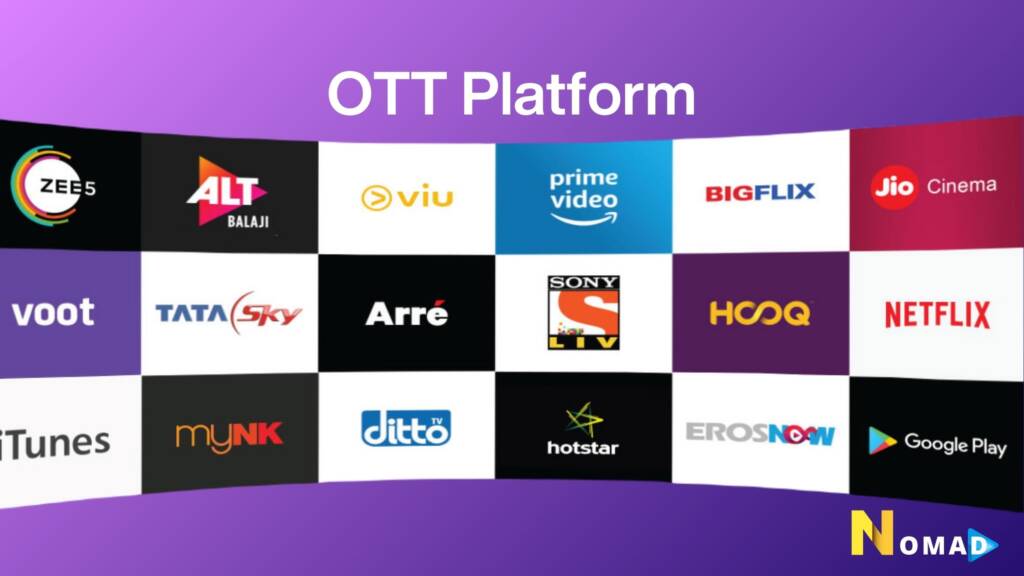
Let’s start by discussing what OTT is. Over-the-top is shortened to OTT. It simply refers to any media content that is sent to the user directly over the Internet as opposed to through conventional broadcast techniques, such as streaming services, video platforms, or apps. It enables users to view their preferred television series, films, and videos on any platform, at any time. Entertainment that is streamed directly to viewers over the Internet, bypassing the requirement for cable or satellite subscriptions, is referred to as over-the-top (OTT) entertainment.
OTT platforms are becoming more and more popular since they offer a practical and adaptable method of watching media. It has greatly simplified and made possible the streaming of material on a variety of devices, including gaming consoles, smart TVs, tablets, and smartphones.
OTT services include, but are not limited to, Netflix, Hulu, Disney+, Amazon Prime Video, and YouTube. There are several possibilities available with over-the-top (OTT) programming, such as live sports events, documentaries, original programs, and movies. Furthermore, these platforms enable you to find fresh content that matches your interests by offering personalized suggestions based on your watching patterns. All things considered, over-the-top (OTT) media has completely changed the way we consume media by giving us greater control over what, when, and how we watch our favourite series and films.
Advantages of the OTT platform:
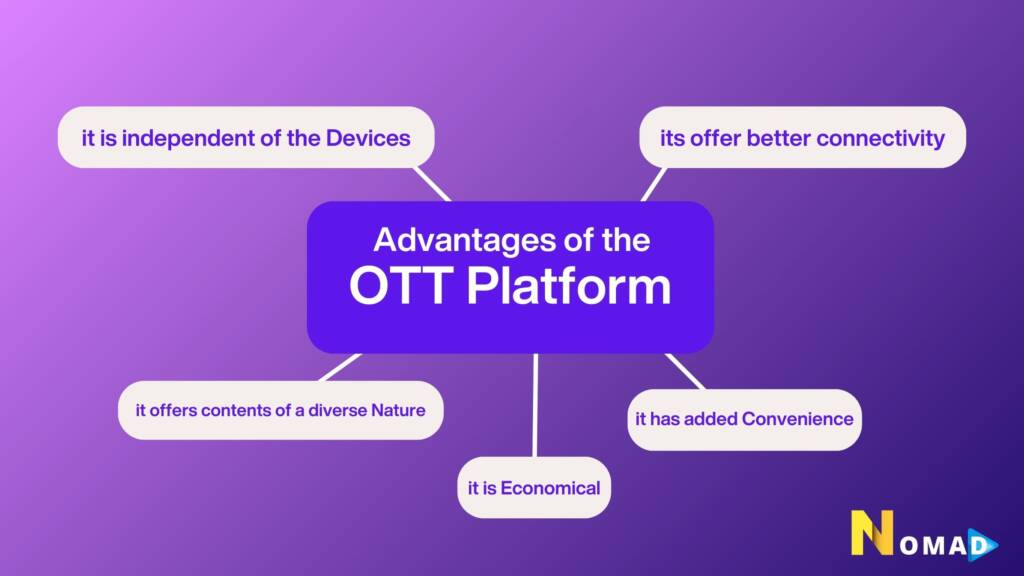
- Cost-effective: With monthly memberships, you can access a huge library of shows and save on cable.
- less expensive than standard cable subscriptions.
- High-quality: By delivering material in high definition, over-the-top (OTT) platforms provide excellent audio and visual experiences.
- Users can modify quality according to their tastes with customizable settings.
- Instant Playback: Favorite TV series or films can be viewed instantly thanks to on-demand streaming.
- No standing in line or having to watch TV commercials.
- Multi-platform accessibility: the ability to see media on a range of gadgets, including smart TVs, laptops, and smartphones.
- smooth access via a variety of audio-visual equipment.
- Original Content: Only original content is available to subscribers.
- Owners of accounts are in charge of what content they want.
Disadvantages of the OTT Platform:
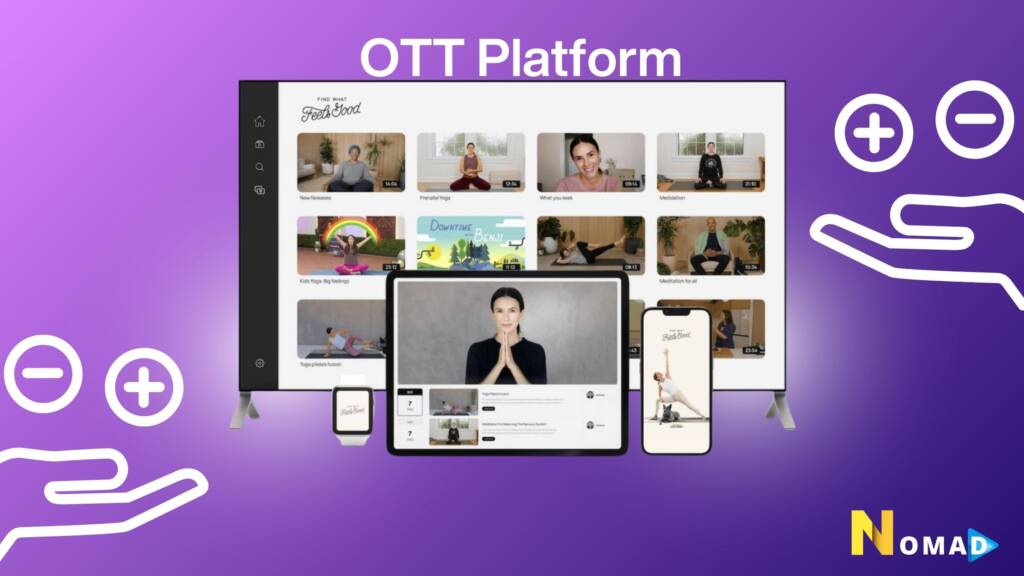
Online Restrictions: Streaming requires internet connectivity.
Those without an internet presence may not be able to access exclusive content online.
Network Dependency: Buffering problems can negatively affect the viewing experience if there are unstable connections.
For best streaming, HD quality necessitates a minimum connection speed.
Online security issues: There’s a chance that certain over-the-top (OTT) services could be unsafe and expose users’ data.
There is a risk of cybercrime, especially on unreliable sites.
Absence of Censorship: OTT platforms are free to operate without interference from the government.
There could be no age limitations on the content, which could be harmful to minors.
Overuse: A surplus of content could encourage consumers to spend too much time on OTT services.
Online content addiction may have an impact on social interactions in real life.
With their many benefits and inherent drawbacks, over-the-top (OTT) platforms have completely changed the entertainment industry. Although accessibility, high-quality content, and cost-effectiveness are big benefits, worries about internet restrictions, security, and overuse should be carefully considered. Utilizing OTT platforms in a balanced way will maximize the advantages while minimizing any potential disadvantages.
Users need to be cautious when navigating the ever-changing streaming service market, choosing reliable platforms, and striking a healthy balance between online and offline activities.
Difference Between OTT and IPTV
While media content delivery via the Internet is a common feature of both IPTV (Internet Protocol Television) and OTT (via-The-Top), there are some significant distinctions between the two. OTT stands for over-the-top (OTT) media delivery, which forgoes traditional broadcast techniques in favor of reaching audiences directly online. This implies that customers can access content on-demand, on a variety of platforms, like Netflix, Hulu, and Amazon Prime Video, at any time. However, IPTV uses Internet Protocol (IP) networks to transmit television programs over the Internet. Through an internet connection, viewers can access live TV channels, on-demand programming, and occasionally even interactive features provided by a specialized IPTV service provider.
In basic terms, IPTV is a paid service that needs to be accessed through a set-top box or other appropriate device. The way content is delivered differentiates OTT from IPTV, among other things. IPTS relies on dedicated networks to distribute content and frequently needs specialist hardware or software, whereas OTT services use public internet connections and can be accessed through applications or websites. The kinds of content that are offered also differ.
While IPTV mostly concentrates on live TV channels and video-on-demand libraries supplied by the service provider, OTT platforms offer a vast variety of media material, including movies, TV shows, and original series. In a nutshell, IPTV only refers to TV content that a dedicated service provider sends over IP networks, whereas OTT is a more inclusive term that covers a variety of streaming services. Each offers benefits and features unique to different tastes and watching patterns.
Are Netflix and YouTube OTT platforms?
When one learns about OTT platforms, the first thing they want to know is which ones—Netflix or YouTube—are available. Yes, that is the response. Without a doubt, Netflix is an OTT platform because it lets customers access movies, TV series, and other content online without using traditional cable or satellite television. An additional OTT platform is YouTube. It is a well-liked option for entertainment, even though it is mostly recognized as a platform for user-generated content and video sharing. In addition, it provides a range of original programs and live-streaming choices. With simplicity of use and a vast selection of content at our fingertips, Netflix and YouTube have both completely transformed the way we consume media.
History of OTT Platforms in India
With BigFlix, OTT platforms made their debut in India. Reliance Entertainment introduced BigFlix, India’s first over-the-top (OTT) platform, in 2008. Eventually, OTT started to take off in India in 2013 with the launch of Zee TV and Sony Liv. In the over-the-top (OTT) space, Disney launched Hotstar in 2015. Disney Hotstar has attracted more viewers since its launch. At the moment, it’s among the most widely used OTT platforms. Subsequently, in early 2016, Netflix began to provide its services in India, where it began to face competition from websites such as Disney+Hotstar and Amazon Prime Video.
How to access OTT Platforms
To use any OTT platform, the user requires a robust internet connection and a device that is connected to OTT. These gadgets could consist of:
Smart TVs: Any smart TV capable of running over-the-top apps.
Smartphones and tablets are examples of mobile devices where over-the-top (OTT) applications can be downloaded.
Personal Computers: desktop gadgets such as laptops and personal computers.
Only users with a Prime membership have access to the premium material. To access the premium material, users must pay a price associated with their subscription.
Conclusion
OTT platforms have had a significant impact on the IPTV business. Users can watch television shows and movies whenever and wherever they want because of their increased freedom and content selection. The variety and ease of use of OTT platforms have led to their immense popularity. Although IPTV remains relevant, particularly for live TV and conventional programming, the emergence of over-the-top (OTT) services illustrates how technology is transforming our entertainment consumption habits. Because of this, both IPTV and OTT platforms will likely keep developing and provide viewers with increasingly greater experiences.
FAQ
Q1: What are OTT platforms?
A: OTT (Over-The-Top) platforms are streaming services that deliver content directly over the internet.Disney+, Hulu, Netflix, and Amazon Prime Video are a few examples.
Q2: How do OTT platforms differ from IPTV?
A: OTT platforms stream content via the internet without needing a traditional TV service provider. IPTV (Internet Protocol Television) also uses the internet but typically requires a subscription with a specific provider and often focuses on live TV channels.
Q3: What are the benefits of OTT platforms?
A: OTT platforms offer greater flexibility, a wide range of on-demand content, and the convenience of watching from any device with an internet connection.
Q4: How have OTT platforms impacted traditional IPTV services?
A: OTT platforms have increased competition, leading IPTV services to innovate and offer more flexible viewing options. Some IPTV providers now include OTT services as part of their packages to stay competitive.
Q5: Are there any disadvantages to using OTT platforms over IPTV?
A: One potential disadvantage is that OTT platforms rely heavily on internet speed and bandwidth, which can affect streaming quality. Additionally, they may not always offer the same live TV experience as IPTV.

